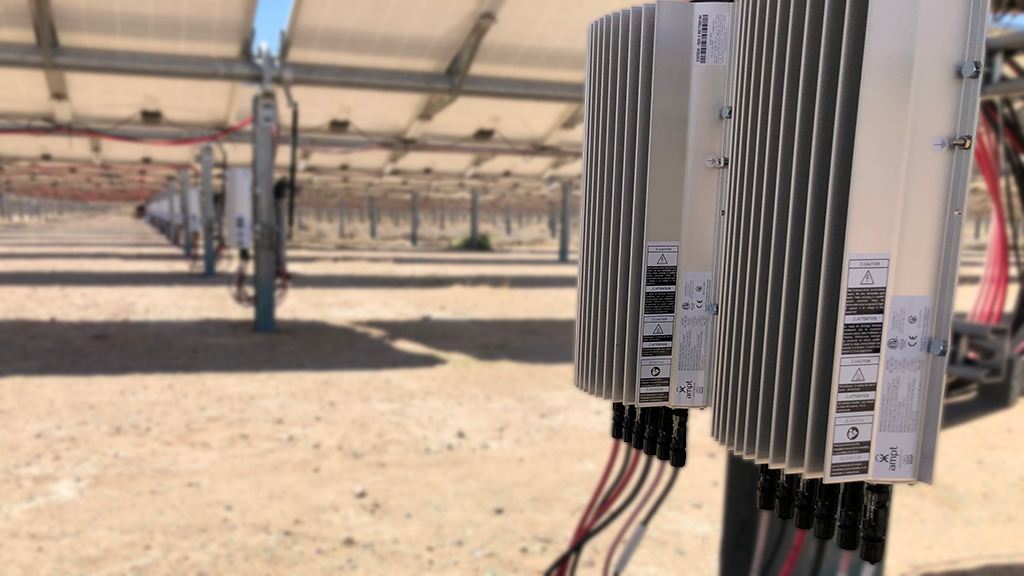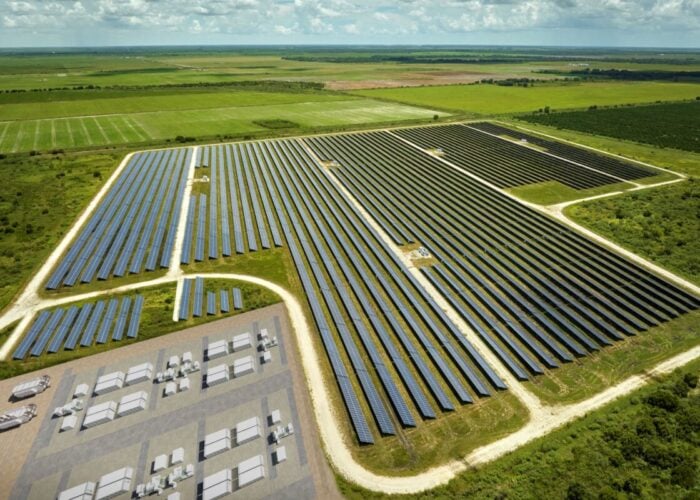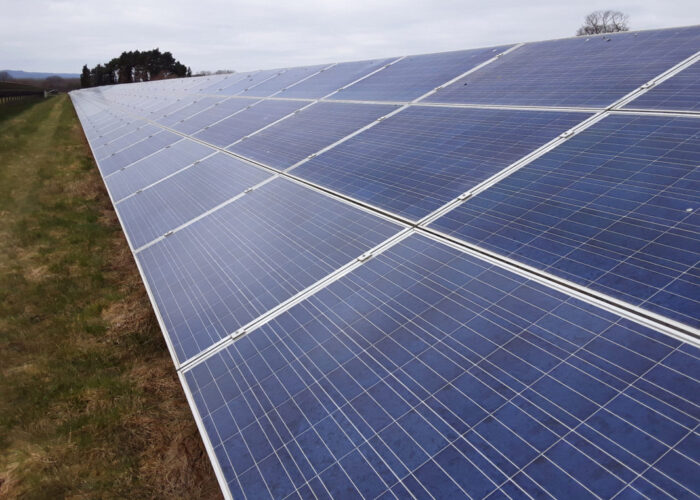
Much of the solar sector is tied inextricably to the storage sector; a solar panel that produces electricity during the day when demand for power tends to be lower will be of little value, unless it is connected to an effective and efficient storage system.
While the vast majority of storage systems are highly efficient – RatedPower estimates that DC-coupled storage systems often have an efficiency of 98%, while an AC-coupled system can boast an efficiency of 90-94% – ensuring that systems minimise lost electricity is of critical importance as solar systems grow in scale and power capacity.
Unlock unlimited access for 12 whole months of distinctive global analysis
Photovoltaics International is now included.
- Regular insight and analysis of the industry’s biggest developments
- In-depth interviews with the industry’s leading figures
- Unlimited digital access to the PV Tech Power journal catalogue
- Unlimited digital access to the Photovoltaics International journal catalogue
- Access to more than 1,000 technical papers
- Discounts on Solar Media’s portfolio of events, in-person and virtual
As a result, a company with an awareness of, and a stake in, both the solar and storage sectors could be well-positioned to ensure efficient operations for the long-term future of both industries. One such company is Ampt, a US manufacturer of string optimisers, whose latest product, the i50, is a DC-DC converter that aims to boost the efficiency of solar-plus-storage systems.
Here, the company’s CEO, Levent Gun, speaks about the importance of optimising operations and the challenges and opportunities of working in the US following the passing of the Inflation Reduction Act (IRA).
PV Tech: What is the role of storage, and by extension the role of inverters and converters, in decarbonising the world’s energy mix?
Levent Gun: Obviously, if we’re going to be replacing fossil fuels, we’re really talking about peaker plants, for instance in the context of natural gas, so the implication is you really need the ability to store electrons to be used once the sun goes down; that becomes paramount. This is why, especially in the US, we’re seeing an increase in solar and storage to be co-located in a lot of locations, and this is the kind of technology; you need to actually build those plants more efficiently and at a lower cost.
The solar systems our plants use are getting more and more sophisticated and corresponding control algorithms are going to get, and are getting, more and more demanding … because of the challenges involved in doing that, without the optimisation technologies, people have been building and co-locating them in a sub-optimal way.
From an operational perspective and efficiency perspective, both in terms of cost generation, putting the batteries directly on the DC bus and truly integrating them – and we call this DC-coupling the batteries onto the PV plants versus AC-coupling – that is significant. It leads to significant cost reductions and this is why we’ve been deploying a lot of these things.
Could you talk about where you’ve deployed some of your converters, and how you have worked in these jurisdictions?
The applications are kind of different. The size and scope of things are different. We’re a company that works with multiple partners in different geographies. For instance, in North America, the larger developers have in-house engineering resources, owners, engineers and they’re fairly sophisticated [where] storage has been going on for a while; they’re used to building larger projects.
The last few projects we’ve done, in the 200-400MW range, are pretty common in the US. In fact, people are building gigawatt-scale projects now. So those are easier [for us] to do in some ways, once we have the appropriate partnerships with other companies, because we can directly work with owners and engineers; there aren’t really any third parties involved and so forth. In that respect, that is easier.
JPC: Have you worked in other parts of the world? Have you had to adjust your ways of working to meet particular requirements?
LG: When we look at Europe, Japan and some other parts of the region, the projects are smaller. I mentioned [that] in the UK we do some projects, but they’re an order of magnitude smaller than the 20-30MW range storage project. We do them with solution partners not directly involved with the customers.
We still support them but there’s usually a larger solution provider that wraps our product as part of their solution with the batteries and their inverters. In fact, in Europe especially, and also in Japan, there is a lot of projects behind the meter as well, so that’s an area where we see a lot of activity and growth.
Because of the diversity of customer sets, the numbers and the smaller projects, we work with solution partners there as well. We work with engineering firms that actually leverage our product and its capabilities to put a solution together, whether it’s a microgrid solution, or combining both EV chargers and batteries along with PV into a solution.
In that case, it may be your typical inverter partner, it might be a string inverter, whereas in the US, that’s always a central inverter and a large central inverter. So at the actual solution level bill of materials, and how we go to market, they are different and the US is definitely easier for us. The same is true for the Americas, we sell directly because these are large enough projects.
And people are the most scarce resource, like design engineers that are hand-holding the developers with these [projects]. There are a lot more tighter partnerships, and third parties involved and channel sales in Europe; that’s the part we’re trying to develop both in Europe and Japan.
Would you agree with the idea that having to tailor your approach to work in different countries is the result of increasingly isolated governance structures around the work?
I agree with that. That is a trend and I think in general, even in some respects, it’s for geopolitical reasons, as we all understand. Especially in the US, right now the trade issues, in particular with China, have really hurt the growth. But in terms of local domestic manufacturing … for the time being, that is really not hurting.
We do not produce in the US as our volumes went up. Actually, we used to manufacture in the US and then we moved; currently, we manufacture in Thailand. It’s the same contract manufacturer, we just moved to a higher volume factory just because of how our volumes grew. Now, we may bring some of that to the US, if economically it becomes more attractive to us. Currently, in the IRA, that’s not the case, but that may change. I think companies will make those decisions.
Now, [the question of] whether some of our European partners will not be able to sell to US projects? If that happens all the time, because of the domestic content requirements, that would be a problem potentially down the road because all the benefits I talked to you about using an optimiser really materialise when our partners kind of take advantage of it, so it needs to be with an optimised inverter and optimised tracker and so forth. So it may be an issue down the road; it is not for the time being.
What do you think some of the long-term impacts of this isolation could be?
First of all, the Ampt component is such a small percentage of the total bill of material, and in terms of costs, I don’t think it will directly impact us. I think even manufacturing in Asia, we will be able to work in all geographies; by choice, we’re not participating in the Chinese market so from that we are isolated, both from the upside as well as the downside of it.
But if our partners are not able to deploy geographically, this will end up focusing those partnerships to the geographies where they are able to operate, and they’ll naturally navigate to those geographies anyway. It won’t be good for solar in general, in my personal opinion. But we’ll find ways to work around that.
At the same time, while the governments are going to make these decisions to be more nationalistic, if you will, I was very pleased to see a lot of cooperation. I was at a trade event in Lisbon earlier this year, where there were a lot of sessions and attention from people and from the government; they clearly understand what the IRA does, its pluses and minuses, and they’re definitely digesting the learnings and applying some of it to the regulations.
There’s definitely cross-pollination going on at that level as well, which will help because the problems are common. There’s training the labour force, interconnection issues – I’ve heard a lot of that in Europe while I was there, twice this year already in conferences – and the trade issues. I think those are all common issues that our respective governments are looking for common solutions to, and hopefully, that’ll pay off.







